New York minute: Tiffany & Co harks back to its horological heyday for a new collection
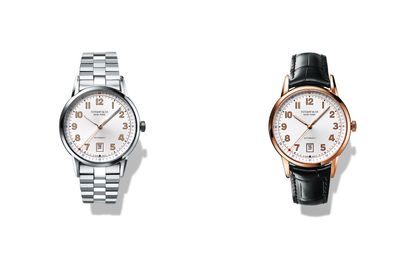
Continuing a stealthy turnaround in its design vision, this month Tiffany & Co. announces its intention to put watch-making centre stage, with the launch of a new collection of New York-designed timepieces powered by Swiss movements.
Though overshadowed by its standing as a jeweller and producer of ever-popular designs by visionaries such as Jean Schlumberger and Elsa Peretti, Tiffany's understanding of the business of watch-making is impressive, with roots dating back to its 19th century Geneva manufacture. That means that when it comes to horological prowess, it knows more than most luxury houses about how to build a watch from the base-plate up.
Its John Loring-designed timepieces from the 1980s and 1990s include, arguably, some of the most visionary watch designs of the modern era. Loring, Tiffany & Co's current design director emeritus, helmed the design department for 30 years from 1979 to 2009. Key models of his creative tenure include the Atlas watch, notable for its relief-style Roman numerals that start on the dial then stretch out across the bezel.
Decades before fashion cottoned on to the chic watch as a luxury accessory, Loring had sensed a desire for less formal designs, creating a sports-luxe horological offering for women he knew, Paloma Picasso among them.
The new Tiffany CT60 collection taps into a more classic period of the New York house's watch-making past. The key model, directly inspired by a Tiffany watch presented to Franklin D. Roosevelt in 1945, is handsome, if a little too perfectly so. Its silver powder numerals and traditional Swiss finishes - sunray dial, Côtes de Genève, colimaçon and perlage engraving - may be a tad too "vintage" but they serve to remind the wearer of a certain horological authority.
The Tiffany East West is the real star of the new collection. The 1940s feel is there but, with creative input and jewellery thinking from Tiffany's current design director, Francesca Amfitheatrof, it harks back to the visionary Loring days.
Rather than read the time vertically, you are directed to read it across the wrist - as if the watch were an identity bracelet. The fact that it suits anybody bodes well for the new generation of Tiffany & Co. watch design.

The new Tiffany CT60 collection taps into a more classic period of the New York house's watch-making past

Creative input and jewellery thinking from Tiffany's current design director, Francesca Amfitheatrof, pictured, harks back to the visionary Loring days
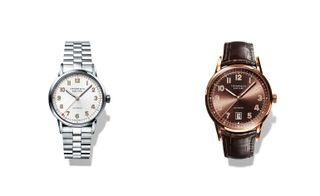
A handsome watch, available in a number of finishes, the CT60 serves to remind its wearer of a certain horological authority

The real star of the collection, however, is the Tiffany East West

The East West invites you to read time across the wrist, as though it were an identity bracelet
Wallpaper* Newsletter
Receive our daily digest of inspiration, escapism and design stories from around the world direct to your inbox
Caragh McKay has been a contributing editor at Wallpaper* since 2014. She was previously watches & jewellery director and is currently our resident lifestyle & shopping editor. Caragh has produced exhibitions and created and edited titles for publishers including the Daily Telegraph. She regularly chairs talks for luxury houses, Van Cleef & Arpels and Cartier among them. Caragh’s current remit is cross-cultural and her recent stories include the curious tale of how Muhammad Ali met his poetic match in Robert Burns and how a Martin Scorsese film revived a forgotten Osage art.
-
 The visual feast of the Sony World Photography Awards 2024 is revealed
The visual feast of the Sony World Photography Awards 2024 is revealedThe Sony World Photography Awards 2024 winners have been revealed – we celebrate the Architecture & Design category’s visual artists
By Ellie Stathaki Published
-
 Don’t Move, Improve 2024: London’s bold, bright and boutique home renovations
Don’t Move, Improve 2024: London’s bold, bright and boutique home renovationsDon’t Move, Improve 2024 reveals its shortlist, with 16 home designs competing for the top spot, to be announced in May
By Ellie Stathaki Published
-
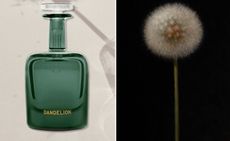 Perfumer H has bottled the scent of dandelions blowing in the wind
Perfumer H has bottled the scent of dandelions blowing in the windPerfumer H has debuted a new fragrance for spring, called Dandelion. Lyn Harris tells Wallpaper* about the process of its creation
By Hannah Tindle Published
-
 Emerging jewellery designers to get to know
Emerging jewellery designers to get to knowThese independent, new and emerging jewellery designers and brands from New York to Paris are firmly on our radar
By Hannah Silver Published
-
 Bernard James’ flora-inspired diamonds mark ten years of Dover Street Market New York
Bernard James’ flora-inspired diamonds mark ten years of Dover Street Market New YorkBernard James’ jewellerydebuting at Dover Street Market features rings, earrings and necklaces inspired by blossoming flora
By Alfredo Mineo Published
-
 Seaman Schepps reveals offbeat new jewellery and homeware
Seaman Schepps reveals offbeat new jewellery and homewareSeaman Schepps celebrates 120 years of eclectic design codes and rare stones in a beautiful new jewellery collection
By Hannah Silver Published
-
 FoundRae’s Dallas, Texas residency gains steam
FoundRae’s Dallas, Texas residency gains steamJewellery label FoundRae’s Dallas pop-up at The Conservatory in Highland Park Village combines medallions, charms and homeware alongside vintage objects
By Pei-Ru Keh Published
-
 Jewellery designers share their most precious personal pieces
Jewellery designers share their most precious personal piecesA host of jewellers give us a peek at the jewellery which brings them joy and solace
By Hannah Silver Published
-
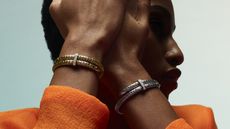 Reed Krakoff ushers John Hardy jewellery into a new era, and refreshes its New York store
Reed Krakoff ushers John Hardy jewellery into a new era, and refreshes its New York storeThe ‘Spear’ jewellery collection riffs on John Hardy’s signature handwoven chain, while the boutique nods to the brand’s Balinese heritage
By Pei-Ru Keh Published
-
 Rimowa and Tiffany & Co are the gleam team behind this luxurious luggage
Rimowa and Tiffany & Co are the gleam team behind this luxurious luggageA new partnership between Rimowa and Tiffany & Co encompasses a suitcase and a jewellery box
By Hannah Silver Published
-
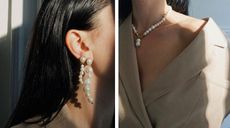 Playing it cool: pearls are having a moment
Playing it cool: pearls are having a momentWe've been deep-diving into boutiques around the world to find the very best calcium carbonate in minute crystalline form. It seems jewellers have been busy rethinking pearls, with contemporary (and often affordable) results
By Hannah Silver Published